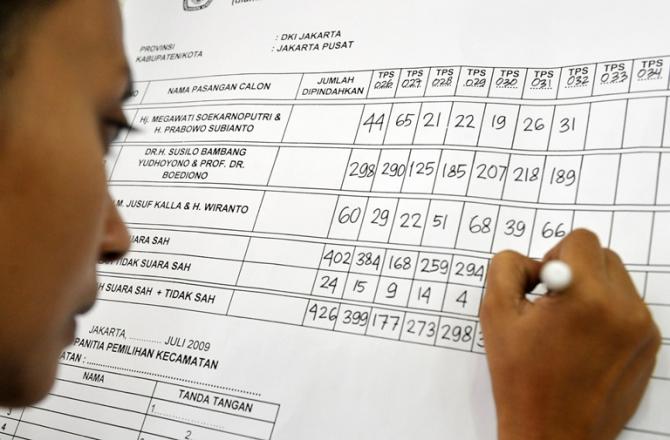
An electoral system functions not only as a procedure and mechanism to convert votes into seats within legislative bodies, but also as a set of instruments for democratization of a political system. As it did in the 2009 national legislative election, Indonesia will apply a proportional electoral system to elect members of the House of Representatives and at the provincial and district level in its 2014 polls. Hence, what kind of democratic political system results from proportional elections?
In this essay we will see that Indonesia’s current system is deeply flawed and that proportional representation, the timing of elections and a confused presidential system are having a negative impact on democratic development.
The following is a description of six elements of an electoral system and its consequences on various aspects of Indonesia’s political democracy.
District size
The system established by the 1945 Constitution can be categorized as almost bicameral. Aside from the House of Representatives with legislative authority, there is also the Regional Representatives Council, which represents the country’s regions. The allocation of 560 seats in the House of Representatives, or DPR, from Indonesia’s 33 provinces is based not solely on the size of the province’s population, but also on the balance of representation between Java and the other islands (each province is represented by three seats at a minimum), as well as political lobbying in the national legislature. The balance of representation between provinces still affects seat allocation in the DPR, as the authority of the Regional Representatives Council is deemed unequal to that of the national legislature.

Staff favorites
- Non Gamstop Casinos UK
- 카지노사이트 순위
- Casino Non Aams
- Casinos Not On Gamstop
- Non Gamstop Casino
- Non Gamstop Casino
- Non Gamstop UK Betting Sites
- UK Online Casinos Not On Gamstop
- Best Non Gamstop Casinos
- Non Gamstop Casino UK
- Casino Français En Ligne
- Casinos Not On Gamstop
- オンラインカジノ
- オンラインカジノ サイト
- Non Gamstop Casino Sites UK
- Non Gamstop Casinos
- Meilleur Casino En Ligne Avis
- Non Gamstop Casinos UK
- Non Gamstop Casinos
- Best Betting Sites UK
- Sites Not On Gamstop
- Uk Sports Betting Sites Not On Gamstop
- Non Gamstop Casino UK
- Casino Online Non Aams
- Casino Online Italia






%20resized.png)
